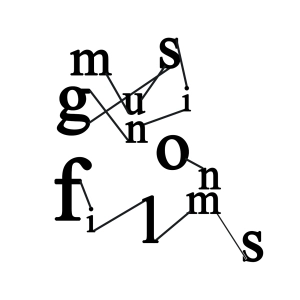
Is it future, or is it past?
Having re-established the characters of Twin Peaks, its locations and new characters, the second part sets about the return of Agent Cooper (Kyle MacLachlan). Sitting in the Red Room in his iconic suit, MacLachlan feels as though he hasn’t aged a day. But for his doppelgänger, it’s a different story.
Killer BOB is an integral part of Twin Peaks’ mythology, yet arrived by accident, through Lynch’s stream of consciousness. Lynch was inspired by set dresser Frank Silva’s appearance, finding a way to tie him into the series’ narrative, caught by accident in the mirror in Laura’s bedroom. BOB, in his long hair and sly smile, is a sinister vision, manifesting between bodies in moments of rage, within a duality of feeling.
In the series’ conclusion, it might ask us “How’s Annie?” But The Return won’t give us easy answers. With Silva’s unfortunate death from AIDS in 1995, MacLachlan must embody both sides of BOB and Cooper’s personality, adopting long hair and a leather jacket. MacLachlan feels out of place and body, unable to convey how truly sinister BOB could be. Cooper’s doppelgänger kills people. Where Cooper only ever kissed women, his doppelgänger has a more visceral sexuality, seeing multiple women; a woman tells him she’s wet. But his doppelgänger is also a step ahead, able to access FBI data and maps online through his laptop.
The central aspect of this part is the Red Room, the series’ most iconic vision. The Red Room might have only emerged out of the international pilot, tying in a set of occult images to appease European audiences, but became a cornerstone of the series through Cooper’s dream in episode 3. The Simpsons (1989-present) had even parodied it in Who Shot Mr Burns?, probably my first exposure to the series. The finale had been one of Twin Peaks’ greatest highlights, confounding the viewer with the unreality of the Black Lodge.
The Red Room feels like a piece of abstract art, a surreal painting, emerging out of Lynch’s art background: corridors and patterns going on for eternity; characters speaking in palindromes. Lynch peels away the curtains to reveal the blackness of infinity, a white horse from episode 1 standing amid the blackness. The Red Room plays as a mirror to events in the finale and Fire Walk With Me (1992). We finally meet Laura (Sheryl Lee), 25 years later, in her noir-esque dress; she and Cooper kiss once more. In the absence of Michael J Anderson, refusing to return, the Red Room finds another inhabitant alongside the bearded MIKE: a sentient, anthropomorphised tree, its head pulsating every time it speaks, a genius, abstract vision, only adding further to the surrealism of the Red Room. Laura removes her face, revealing a white void of nothingness within the contradiction of her existence, telling us she’s dead.
Lynch’s visual effects of the Red Room might seem objectively awful. The floor tears itself apart, becoming jagged blocks. Lynch stretches and twists the visual image, throwing Cooper out into the abyss of space, until he manifests within the infinity of the glass cage from the previous episode. Lynch fucks with us, but then this is David Lynch.
But Lynch also returns us to another integral aspect of the original series: family. In Buckhorn, the conflict between imprisoned principal Bill (Matthew Lillard) and wife Phyllis (Cornelia Guest) might feel soap opera, or the final departure between lovers in a crime series. But Lynch injects these scenes with raw emotion and a sense of subversion; in their infidelity, Phyllis manipulates with power over Bill, able to twist him to what she wants, entirely unforgiving. Phyllis watches a TV show of mauled animals, because this is her character. Through Laura’s relationship with her dad, Leland (Ray Wise), manifesting within the Red Room in his grey hair, we recall their fractured emotional breakdown so powerful within the original series, and the inevitability of Laura’s death in Fire Walk With Me. (Laura’s cyclical Missoula-born analogue and dual opposite, Maddy Ferguson, is absent.)
Lynch marks the passage of time through other characters. James (James Marshall) appears at the Bang Bang Bar, recently suffering a motorcycle accident. We imagine how time has passed for James: working odd jobs to pay the bills, doing manual labour, never able to rise up beyond his motorcyclist persona. As Hawk (Michael Horse) searches through the woods at night with his flashlight, he receives a final call from the Log Lady (Catherine E. Coulson), inviting us in for coffee and cherry pie, the series’ staple diet, but tells us she’s too weak. In some alternative universe, we can imagine Hawk and the Log Lady together, eating large slices and laughing over old times, as she warns us once more in symbolism. It’s not to be.
The Return continues to expand Twin Peaks’ world: we move over to Las Vegas, Nevada, as Lynch returns to the dark underworld at night that defined locations like One Eyed Jack’s and Los Angeles in Mulholland Drive (2001). Mr. Todd (Patrick Fischler) and Roger (Joe Adler) meet for a shady business deal, but Lynch quickly moves away, likely to follow up in a future episode.
Lynch closes the episode in the Bang Bang Bar with music, as Chromatics perform Shadow; even the blue lighting channels Julee Cruise’s most powerful, viscerally emotional performances. Chromatics are one of my favourite musical discoveries recently, alongside other bands like CHVRCHES and female artists like Ladyhawke and Hannah Peel. CHROMATICS ARE THE FUCKING BEST. Lynch is adding greater visibility to lesser-known modern artists, rather than relying upon a needless celebrity cameo or a return for Cruise.

